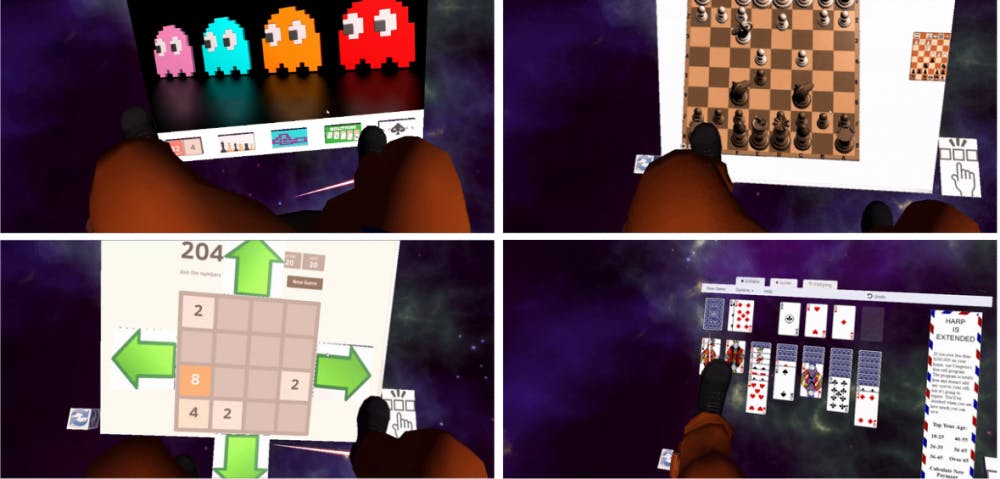
Penn's Virtual Reality lab is making a fresh push to provide more unified and professional VR services in the University.
The Neurology Virtual Reality Laboratory, which recently became a core service of the Brain Science Center, aims to centralize VR efforts throughout the University. Through coding virtual reality into experiments, Penn researchers have been able to use the VR lab to create novel experiments and advance medical research.
Past experiments have included measuring psychological reactions to architectural features and helping alleviate pain in patients who have prosthetic limbs.
The Neurology VR Lab, which is part of the Perelman School of Medicine and started in March 2017, currently has two professional programmers, one intern, and a neuroscientist working inside the lab, said Alexander Miller, who is the co-director and has been a full-time programmer in the lab for two years.

“The goal of the lab is to provide a professional VR service so that people can do better science for less money,” Miller said.
Penn students and professors can approach Miller to discuss research plans of working together, said Branch Coslett, neurology professor and co-director of the lab. While researchers might have struggled to find an expert programmer to design a particular experiment in the past, researchers can now approach the lab, Miller added.
Through professional programming and code reuse, he hopes that his team’s skills can help researchers improve virtual reality services and pursue more virtual reality experiments.
Miller also said collaboration between the experimenters and the lab will reduce costs and improve the speed of experiments.

One experiment the lab developed is the Arch project, which allows people to view different rooms in virtual reality to investigate the psychological effects of experiencing different architectural features. The project, which started in February 2018, belongs to research conducted by the Psychology Department.
By presenting two rooms side-by-side with different materials, levels of clutter, or presence of windows, experimenters were able to infer individuals' preferences when choosing rooms. Experimenters also rated the importance of each feature by looking at how much time each participant focused on a given feature.
“When you are in VR, you actually have a real sense of the space. You can have this really believable compelling presentation of rooms," Miller said. "That’s impossible to do in the real world but you can do it with virtual reality.”

In another experiment, which started in March 2017 and was conducted by the Neurology Department, people with phantom limb pain were instructed to use their legs to play games or browse the internet in virtual reality. The experiments aimed to relieve pain for patients. So far, the therapy has been effective, though researchers are looking for more data and information, Coslett said.
Adam Federbusch, a co-op student from Drexel who works inside the lab, said the lab is currently integrating new technologies into different experiments. The lab recently bought gloves equipped with accurate tracking devices to monitor participants in experiments.
The Daily Pennsylvanian is an independent, student-run newspaper. Please consider making a donation to support the coverage that shapes the University. Your generosity ensures a future of strong journalism at Penn.
Donate







